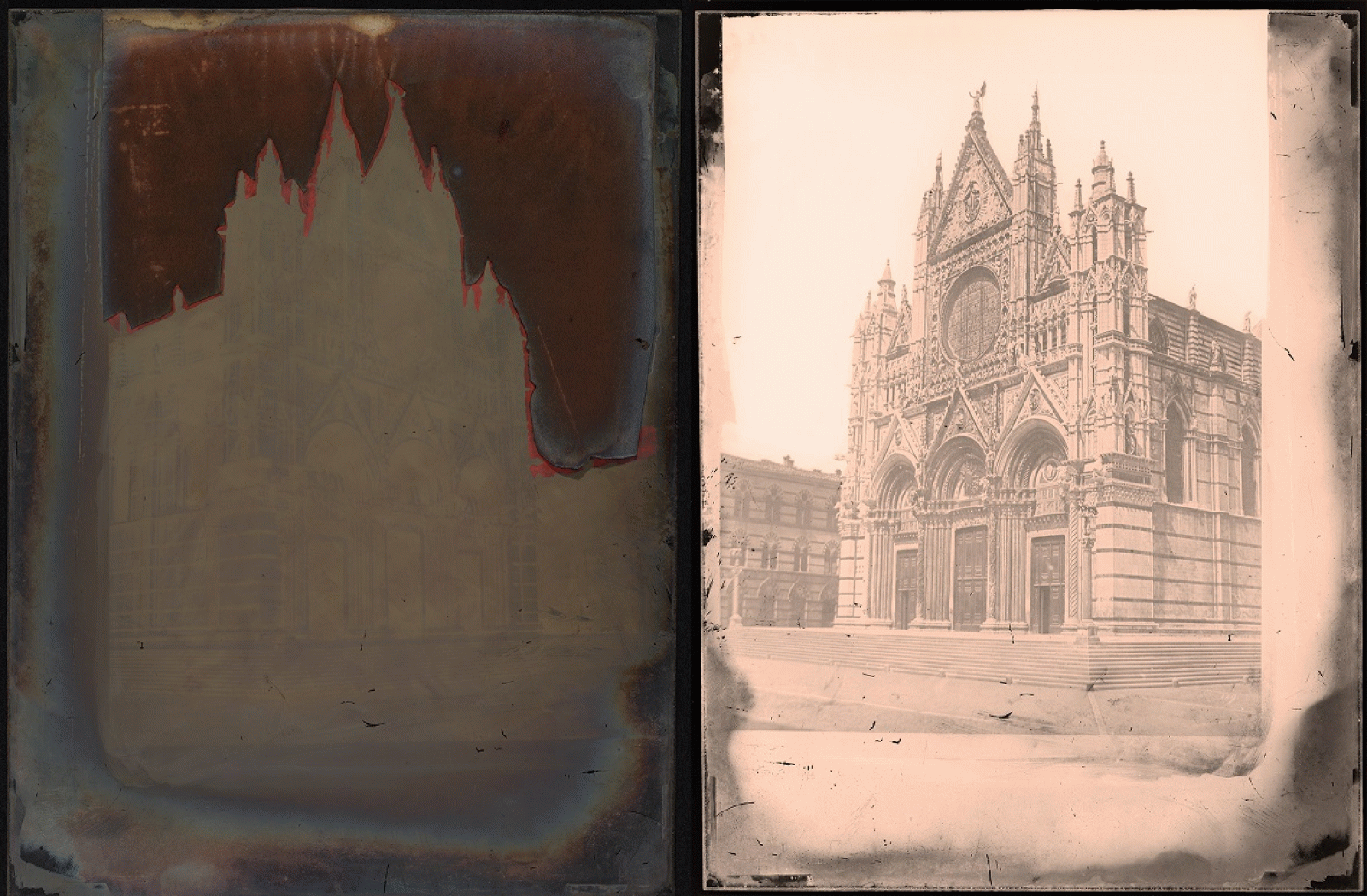Ricerca
Studies on the Photography, Laboratory, and Archival Practice of Anton Hautmann around 1860
Ute Dercks, Giulia Fraticelli, and Dagmar Keultjes

Stabilimento Hautmann, Two glass negatives of the Façade of the Siena Cathedral, before 1862, each plate 24 x 18 cm, digital reproduction with incident light and transmitted light. Florence, Kunsthistorisches Institut in Florenz – Max-Planck-Institut, Photothek, Inv. fld0010501e and fld0010501x
In 2016, the Photothek acquired a bundle of glass negatives, prints on paper, printing blocks, and archival fragments of the Stabilimento Hautmann. The motifs of the more than 1100 plates include Tuscan artworks and architecture, city vedute, landscapes, genre-like scenes of rural life, animals, and details of hands. The conservation and digital processing of the holdings forms the basis for a catalogue raisonné that does full justice to the photographed objects and equally reveals the technical manipulation carried out on the photo-objects in the laboratory. The spectrum of topics as well as the various exposure and retouching techniques allow in-depth insights into the practice of the photographer and sculptor. The Fondo Hautmann of the Photothek also contains three albums with portraits of the Hautmann family and more than 170 stereographs.
The fact that Hautmann devoted himself to a binocular perception of space with his stereo imaging technology in the years between 1858 and 1862 is not only the result of the “stereoscopic mania” of the period, but also of his profession as a sculptor. The research project on the Fondo Hautmann is, therefore, also devoted to aspects of spatial vision and photography in the years around 1860.
Dagmar Keultjes: Retuschiert und vom Alter gezeichnet: Ein Kollodiumglasnegativ aus der Sammlung der Photothek des Kunsthistorischen Instituts in Florenz
In: Rundbrief Fotografie 27.1, 2020, pp. 4–7
OPAC read online


